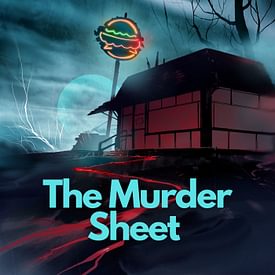Today, as part of our new occasional series The Fentanyl Files, we’re going to focus specifically on a defense perspective.
In 2018, the Indiana legislature passed a law making dealing resulting in death a level 1 felony. When a person dies of a drug overdose, dealers responsible for securing them the deadly substance face substantial prison time.
But some believe that this law is targeting the wrong people — low-level dealers, who may be addicts themselves. These critics want the state of Indiana — and the United States of America as a whole — to start thinking big picture and playing the long game when it comes to fighting the War on Drugs.
To find out more about this perspective — along with information on what it's like to defend clients in dealing resulting in death cases — we spoke with Timothy Sledd, the Chief Public Defender of Indiana's Lawrence County.
Send tips to murdersheet@gmail.com.
The Murder Sheet is a production of Mystery Sheet LLC.
---------------------------------------------------------------------------------------------------------------------------------------------------------------
A weight loss journey can feel like a lonely struggle. But it doesn’t have to be.
For so many of us, lifestyle changes like deciding to lose weight, adopting a nutritious diet, and taking up fun exercises are all about putting our own health and wellness first. But it can be really hard to know where to begin — or how to keep the weight off once we’ve seen some progress. Quick fixes like soup diets and juice cleanses are unsustainable and often unhealthy. There’s a much better way to embark on this journey that over 200,000 people have already chosen. The Ro Body Program.
Here’s how it works. Ro gets you access to one of the most popular weight loss shots on the market. Their Ro Body Program then sets up a comprehensive weight loss program tailored to your specific lifestyle, health status, and goals. In addition to the weekly shot, you get one-on-one coaching with a registered nurse. That can help you adopt and stick with lifestyle changes like exercise routines and nutritious diets. It’s a comprehensive program that sees participants lose 15-20% of their weight in a year, on average. But the real benefit is that you keep that weight off.
You’re not alone in this. Ro can help you lose weight step by step, from the insurance paperwork for the medication to answering questions and checking in on your progress. And the process is so convenient. You can sign up at home.
We wish the Ro Body Program had been around when we started our weight loss journeys, and we’re both looking forward to trying it in order to emphasize our health. This is weight loss at its most sustainable.
With Ro, the average weight loss is 15-20% in 1 year, with healthy lifestyle changes. BMI and other eligibility criteria apply.
Go to ro.co/msheet
Sign up today and you’ll pay just $99 for your first month—and $145 a month after that.
Medication costs are separate.
That’s R-O-DOT-C-O SLASH MSHEET.
https://ro.co/msheet
See Privacy Policy at https://art19.com/privacy and California Privacy Notice at https://art19.com/privacy#do-not-sell-my-info.


